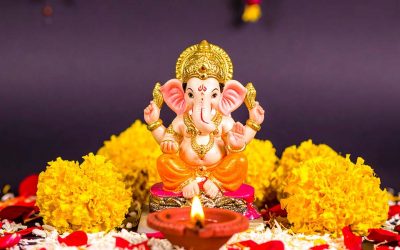Hindu Rituals for New Parents: Welcoming a Baby with Blessings
A New Life, A Sacred Start: Hindu Rituals for New Parents
Welcoming a new life into the world is a profoundly significant experience, particularly in Hindu society, where the arrival of a child is not just a family occasion but a spiritual milestone. Hinduism prescribes a sequence of spiritual rituals, referred to as samskaras, that celebrate the process of life from birth to death. For new parents, these initial rituals provide a strong means of greeting their baby with love, intention, and divine blessings.
These ancient rituals aren’t symbolic—they’re practical, communal events that lead the child into the social and spiritual fabric of the world. Although contemporary lifestyles might change how these rites are done, the tradition remains based on prayer and purpose.
Jatakarma: A Sacred Welcome
The first ritual for a Hindu child is Jatakarma, which is carried out as soon as the baby is born. It officially marks the official introduction of the child into this world. In traditional Hindu practices, the father would lightly touch his child’s lips with a mix of honey and ghee, followed by lightly whispering the Vedic mantras into their ears.
- These chants are more than ancient words—prayers for intellect, longevity, and spiritual grounding. Gods like Saraswati, the goddess of knowledge, are called upon to bless the child’s mind and future.
- Even in modern-day hospital environments, families modify this ceremony in abridged versions, mixing tradition with utility. The underlying purpose—giving the child a warm, sacred embrace—remains firm.
- Next comes Namakarana, the naming ceremony, typically held on the 11th or 12th day after birth. This isn’t just about picking a name—it’s a vital step in shaping the child’s identity and spiritual path.
The infant is bathed, dressed in fresh clothes, and surrounded by relatives. A selected elder or the father puts the name into the infant’s ear. The name is typically chosen with the assistance of astrology, depending on the child’s birth star (nakshatra) and planetary positions. This isn’t superstition—a profound belief that cosmic rhythms influence human life.
In other parts, this ceremony blends with the Barasala or cradle ceremony. In it, the baby is lovingly put into a beautifully adorned cradle amidst blessings, songs, and gifts by elders. It’s a religious occasion and a celebratory get-together for the family.
Nishkramana: First Steps into the World

Around the fourth month, the Nishkramana ceremony acquaints the child with the outside world. The rite signifies the child’s first formal outing and their entry into society.
Conducted at dawn or dusk, the baby—freshly bathed and dressed—is taken out, commonly to a garden or temple. The father holds the child as he recites hymns, petitioning for blessings from the sun and the natural elements for the health and well-being of the baby.
Essentially, it’s when the child is introduced to the world, symbolically entering a greater world.
Annaprashana: First Solid Food
At around six months, the baby is given the Annaprashana ceremony. This “first feeding” ceremony is the milestone from exclusive breastfeeding to solid food.
A small amount of rice pudding or soft food, frequently blended with honey or ghee, is presented to the child. Relatives and friends are present to see this occasion happen, give blessings, and rejoice with music, food, and laughter.
It’s not about nutrition—it’s a sign of a new physical development and independence phase.

Mundan Ceremony
The Mundan ceremony, or the child’s first haircut, is usually done in the first year or the third year. The ceremony has profound symbolic significance: cutting hair symbolizes the elimination of previous karmas and defilements of previous births.
The head of the child is shaved, occasionally leaving a tuft of hair (shikha) at the top, which is said to preserve spiritual power. Mantras are recited, and the ritual is often made a celebratory occasion with participation from close relatives.
While some families change or omit this ritual based on personal or local preferences, for others it’s a reaffirmation of innocence, protection, and rebirth in life.
Why These Rituals Matter
These rituals aren’t merely a religious requirement—they’re infused with meaning and pragmatic purpose.
- Spiritual grounding: The ceremonies establish a solid spiritual foundation for the child.
- Community connection: They place the child into the social fabric of family and society.
- Developmental milestones: The rites typically coincide with major phases of physical and mental development.
- Cultural preservation: They prevent the loss of traditions, language, and values.
These rituals give parents a feeling of direction in what may be a crazy and emotional experience. They take ordinary moments—naming a child, first feeding them—into sacred moments full of intention and love.
A Journey Begins
For Hindu families, the arrival of a baby is more than balloons and baby showers—it’s a religious initiation into life itself. Through the samskaras, parents celebrate the birth of their child with reverence, blessings, and a deep connection to the past and future.
These rituals remind us that each phase of life is worthy of attention and ceremony. And for new parents, they provide a deep way to stop, look around, and start the lovely journey of raising a soul with grace, love, and purpose.






